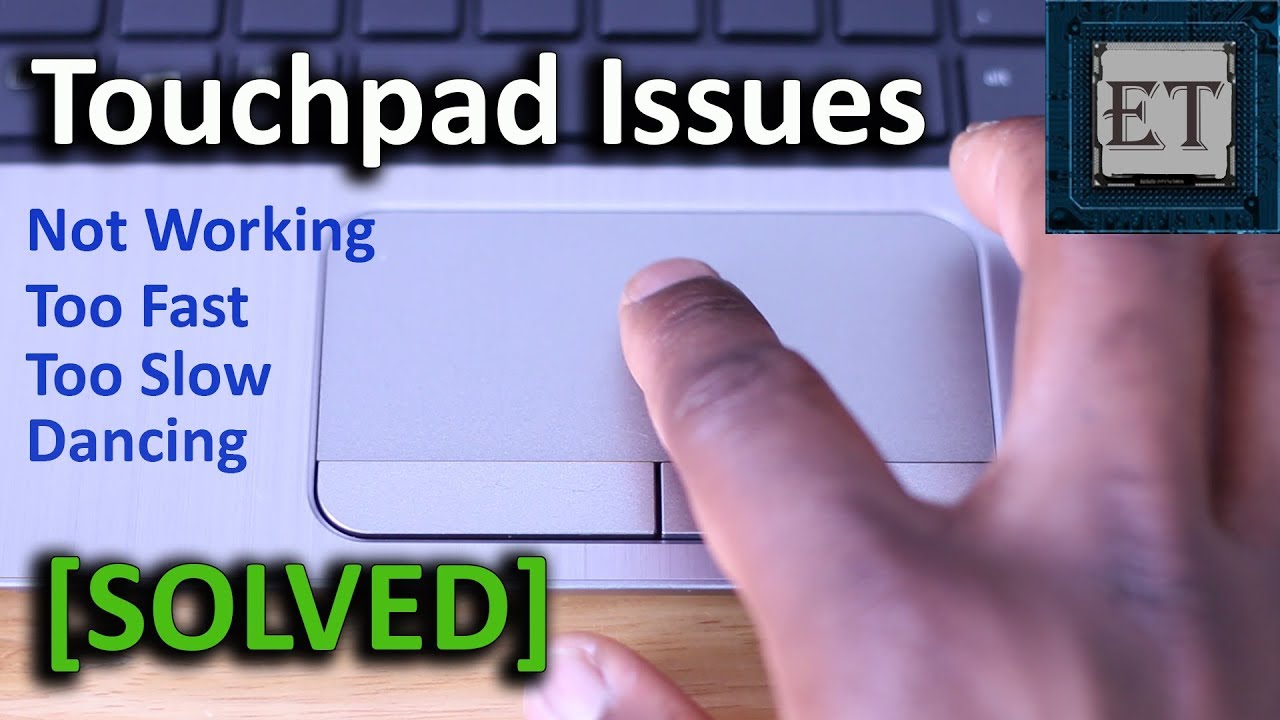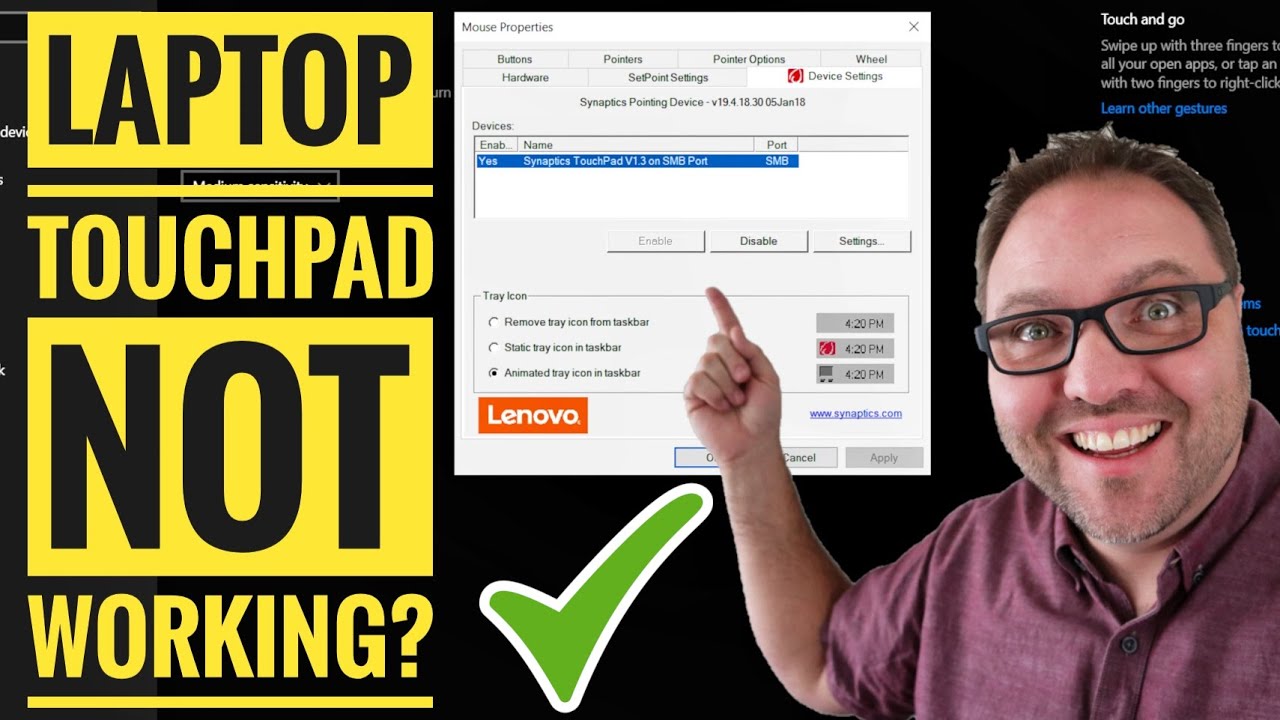Why is my laptop mouse touchpad not working?If so, you're not alone. A malfunctioning laptop mouse can be frustrating and make it difficult to use your computer effectively. Fortunately, there are several potential solutions to this problem, and with a bit of troubleshooting, you can often get your mouse back up and running in no time.
Why Is My Laptop Touchpad Not Working?
If you're having trouble with your laptop touchpad, you're not alone. A malfunctioning touchpad can be frustrating, but by understanding some of the most common causes of touchpad issues, you can troubleshoot and fix the problem more easily.
One of the most common reasons why laptop touchpads stop working is hardware issues. This can include anything from a loose connection to a damaged or broken touchpad. If your touchpad has sustained physical damage, it may need to be replaced entirely.
Another potential cause of touchpad issues is driver problems. Your touchpad relies on specific drivers to function properly, and if these drivers become outdated, corrupted, or missing, your touchpad may stop working as a result. In this case, updating or reinstalling your touchpad drivers may be necessary.
It's also possible that the issue with your touchpad is related to settings and configuration. Your touchpad may have been accidentally disabled, for example, or there may be a conflict with other input devices connected to your computer. Checking your touchpad settings and ensuring that everything is configured correctly can often solve these types of issues.

How to Fix Mouse and Touchpad Problems in Windows 10, 8.1, 7 – (3 Fixes)
How To Fix A Laptop Touchpad That's Not Working In 8 Easy Steps
Having a laptop touchpad that's not working can be a major inconvenience. Fortunately, there are several easy steps you can take to troubleshoot and fix the problem.
Check The Touchpad Settings
The first thing to do is to check your touchpad settings. Make sure your touchpad is enabled and configured properly. If it's disabled, simply enable it again.
Restart Your Laptop
A simple restart can often fix touchpad issues. Restart your laptop and see if the touchpad starts working again.
Update Or Reinstall Touchpad Drivers
Outdated, corrupted, or missing touchpad drivers can cause touchpad issues. To fix this, update or reinstall your touchpad drivers.
Disconnect External Devices
Disconnect any external devices connected to your laptop, such as a mouse or USB hub. These devices can sometimes interfere with the touchpad.
Check For Hardware Issues
If none of the above steps work, there may be a hardware issue with your touchpad. Check for any physical damage or loose connections.
Perform A System Restore
If the touchpad was working fine previously, a system restore can help you fix any issues that may have caused the touchpad to stop working.
Perform A System Reset
A system reset can sometimes help fix touchpad issues. Just make sure to back up all your important files before doing this.
Contact A Professional
If none of the above steps work, it may be time to contact a professional for assistance. They can help you diagnose and fix the issue.
How To Enable Your Laptop Touchpad In Windows 10
Enabling your laptop touchpad in Windows 10 is a straightforward process. Simply go to the Start menu and select "Settings." From there, select "Devices" and then "Touchpad." You should see an option to "Enable" or "Disable" the touchpad. If the touchpad is currently disabled, select "Enable" to turn it back on.
You may also have additional options to adjust the touchpad sensitivity or gestures. If you don't see the touchpad settings in your Windows 10 settings, it's possible that your touchpad drivers are outdated or missing. In that case, you can try updating or reinstalling your touchpad drivers to enable your touchpad.

How to Enable or Disable Touchpad in Windows 10 Settings
Is Your Whole Computer Frozen?
If you're experiencing a complete computer freeze, it can be frustrating and even scary. There are several potential reasons why your computer may be frozen, and understanding these causes can help you troubleshoot and fix the issue.
Hardware Issues
One of the most common reasons for a completely frozen computer is a hardware issue. This can include anything from overheating to a failing hard drive. If your computer is overheating, it may shut down to prevent damage to the components. A failing hard drive can also cause freezes or crashes. In this case, you may need to replace the faulty hardware.
Software Issues
Software issues can also cause a computer to freeze. This can include everything from outdated or corrupted drivers to malware infections. If you suspect a software issue, try updating your drivers or running a malware scan.
Insufficient Memory
If your computer is running low on memory, it may freeze up. This can happen if you're running too many programs at once or if you have too many files open. Try closing unnecessary programs or files to free up memory.
Power Issues
Power issues can also cause a computer to freeze. If your computer is not getting enough power, it may shut down or freeze up. Check that your power supply is working correctly, and consider getting a surge protector to protect against power fluctuations.
People Also Ask
How Do I Turn My Touchpad Back On?
Using a mouse and keyboard, Press the Windows key, type touchpad, and press Enter. Or, press the Windows key + I to open Settings and choose Devices, then Touchpad. Another way of doing it is by using the touchpad settings window and clicking the Touchpad toggle switch to the On position.
How Do I Fix A Laptop Mouse That Won't Move?
If your laptop mouse won't move, try checking your mouse settings, restarting your laptop, or disconnecting any external devices. You can also try updating or reinstalling your mouse drivers, performing a system restore, or contacting a professional for assistance.
What Do I Do If My Laptop Mouse Pad Is Not Working?
If your laptop touchpad is not working, try checking your touchpad settings, restarting your laptop, or updating or reinstalling your touchpad drivers. You can also disconnect any external devices or perform a system restore or reset. If none of these solutions work, it may be time to contact a professional for help.
Conclusion
In conclusion, if you're experiencing issues and asking google 'why is my laptop mouse touchpad not working', there are several potential causes and solutions to explore. By troubleshooting the problem and trying out different fixes, you can get your mouse back up and running and continue to use your laptop with ease.